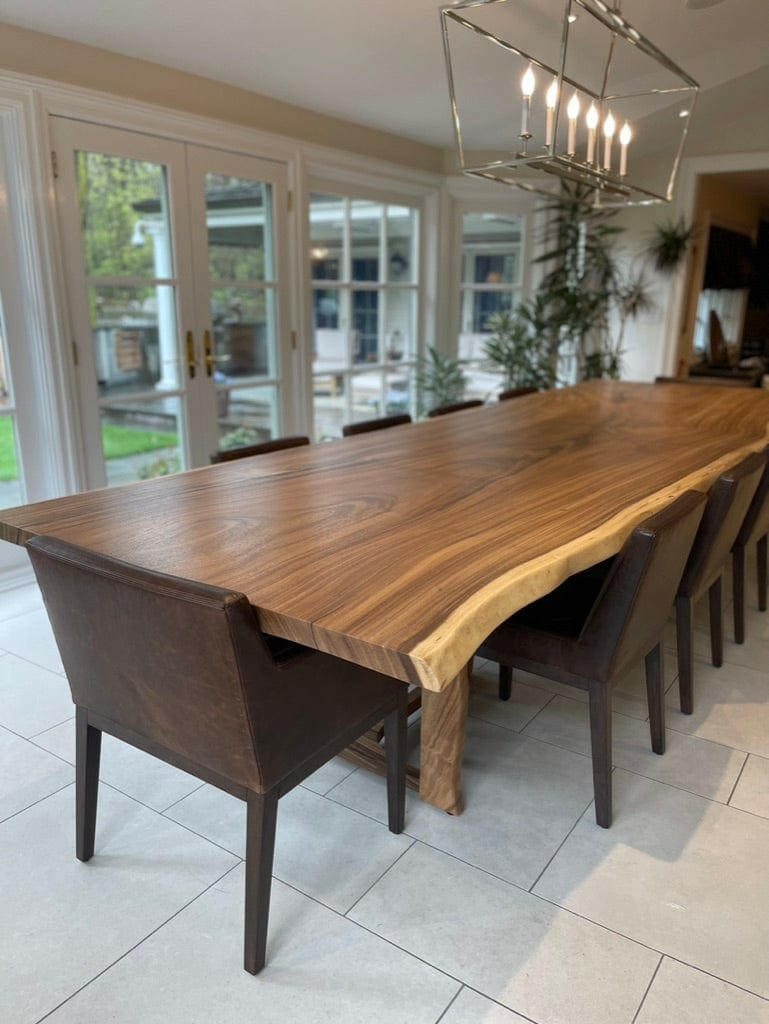The Ultimate Overview to Picking Long Lasting Dining Room Table Legs
The Ultimate Overview to Picking Long Lasting Dining Room Table Legs
Blog Article
A Thorough Check Out Table Leg Styles: Discovering the Ideal Suit
Picking the ideal dining table leg design is critical for both visual appeal and practical capability. Standard four legs supply ageless beauty and security, while the stand base provides raised legroom and a contemporary look. For those with bigger tables, trestle legs guarantee tough assistance, whereas hairpin legs present a mid-century modern ambiance with their minimalist layout. The x-shaped legs blend modern style with boosted stability. Each of these alternatives brings distinct advantages, making the option greater than just an issue of preference. Discover even more to uncover which style completely complements your eating room and way of life.
Traditional Four Legs
Amongst the different kinds of dining table leg styles, the typical four-leg design stays a classic selection for numerous houses. 4 legs supply balanced assistance, guaranteeing the table stays steady and qualified of bearing considerable weight (dining room table legs).
From an aesthetic viewpoint, the traditional four-leg layout can be quickly adjusted to numerous interior designs. Whether crafted from wood, steel, or a mix of products, these legs can be intricately carved, smooth and minimalistic, or anything in between. Their adaptability enables them to match both rustic and contemporary settings perfectly.
Moreover, the uncomplicated framework of the four-leg design assists in simplicity of movement and positioning within a room. Unlike more complex bases, this style minimizes blockages, providing enough legroom for diners. In summary, the traditional four-leg table leg design marries sustaining elegance with sensible capability, making it an astute option for those seeking both kind and feature in their dining furnishings.
Stand Base
Typically celebrated for its classy and space-efficient design, the pedestal base is a recognized alternative to the standard four-leg setup in table leg designs. This unique base generally includes a single central column sustaining the table top, which can vary in type, from ornately sculpted wood to smooth, modern-day metal. One of the main benefits of the pedestal base is its capability to make the most of legroom and seating versatility. Without edge legs, diners are afforded higher liberty of movement, making it an optimal choice for round and oval tables that advertise even more intimate and comprehensive gatherings.
The central column itself offers a canvas for detailed styles and artistic expressions, including an aspect of aesthetic rate of interest below the table. In recap, the pedestal base incorporates performance with style, making it an improved and useful alternative for diverse eating atmospheres.
Trestle Legs
Trestle legs provide a durable and timeless structure for dining tables, identified by their horizontal cross-bracing and tough support light beams. Originating from middle ages times, this design has actually evolved yet maintained its vital framework, making it a perennial fave in both traditional and modern setups. The central trestle light beam, frequently sustained by two or more upright posts, uses remarkable security, enabling larger table sizes without the demand for additional legs.
A considerable benefit of trestle leg tables is the enough legroom they supply. Unlike tables with four edge legs, the lack of blockages at the table's edges supplies unblocked room for chairs and diners, improving convenience and accessibility. This makes trestle tables optimal for suiting larger gatherings, whether in a dining-room or a reception hall.
The visit their website aesthetic flexibility of trestle legs is notable. Readily available in a variety of materials such as wood, metal, and composite, they can be completed to enhance a large range of interior styles. From rustic farmhouse to sleek modern-day styles, trestle legs can be tailored to match individual tastes. Their enduring appeal and functional benefits make trestle legs a compelling option for those seeking both style and functionality in their table.
Barrette Legs

The charm of barrette legs depends on their simplicity and convenience - dining room table legs. Available in a variety of products, consisting of steel and brass, they can be finished in many shades to enhance different interior designs. Whether coupled with a rustic wooden tabletop or a contemporary glass surface area, barrette legs easily mix functionality with a touch of vintage appeal
Durability is an additional significant attribute of barrette legs. Regardless of their delicate appearance, these legs are engineered to bear considerable weight, making sure the eating table continues to be stable and secure. Additionally, they are fairly simple to set up, making them a prominent selection for do it yourself fanatics and specialist furnishings manufacturers alike.
X-Shaped Legs

Created from materials such as steel, timber, or a mix of both, X-shaped legs can be tailored to match numerous design preferences. Steel legs usually lend a streamlined and industrial feel, suitable for loft-style apartments and contemporary eating rooms. On the other hand, wooden X-shaped legs use a warmer, more rustic charm, appropriate for farmhouse or diverse interiors. The flexibility in products permits property owners to personalize their table to much better fit their overall design plan.
Moreover, the engineering behind X-shaped legs guarantees even weight distribution, lessening the threat of tottering and boosting durability. This makes them particularly well-suited for larger table that require additional assistance. Basically, X-shaped legs mix practical design with modern-day visual appeals, making them a timeless choice for varied eating atmospheres.
Verdict
An extensive understanding of dining table leg styles reveals the distinctive features and advantages of each style. Standard four legs provide stability and classic allure, while stand bases offer legroom and a streamlined appearance. Trestle legs make certain durable support for larger tables, and barrette legs present a mid-century contemporary aesthetic. X-shaped legs incorporate modern style with enhanced security. Choosing the suitable leg style makes certain both practical and aesthetic see here complete satisfaction in any kind of dining area.
Report this page